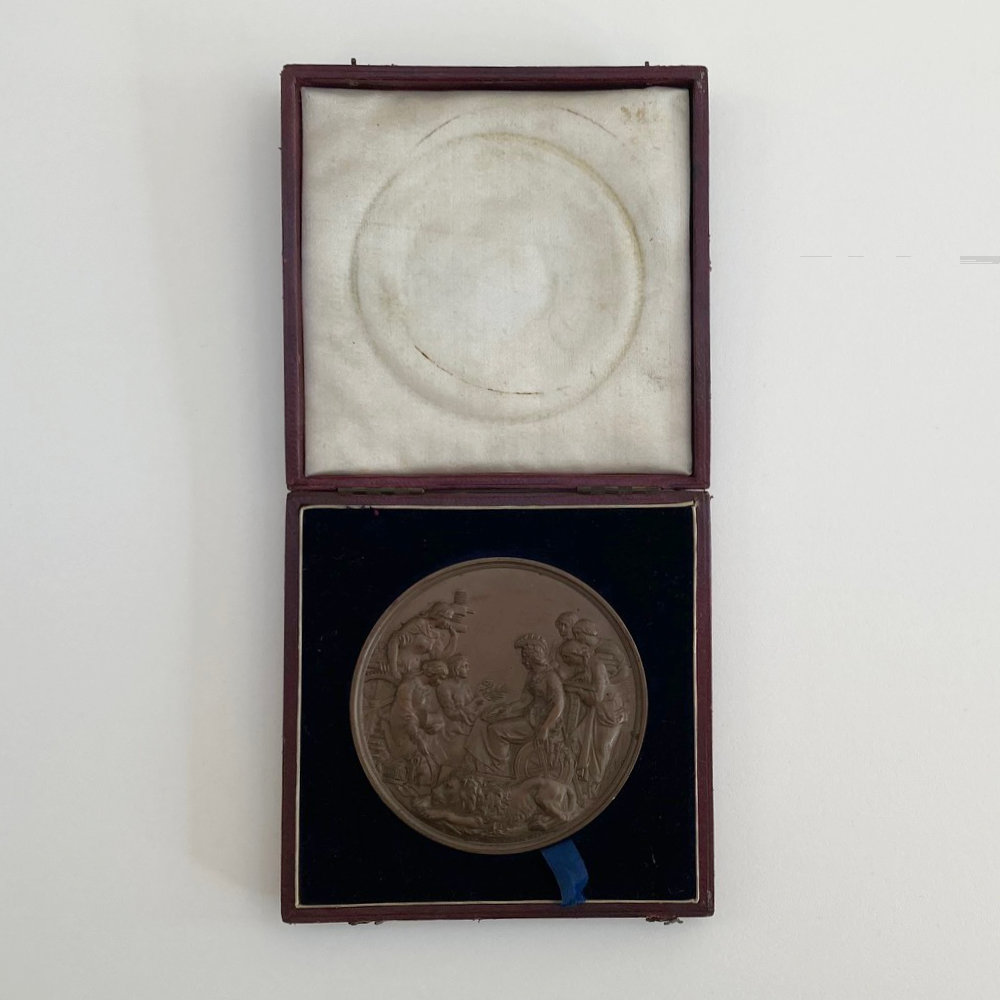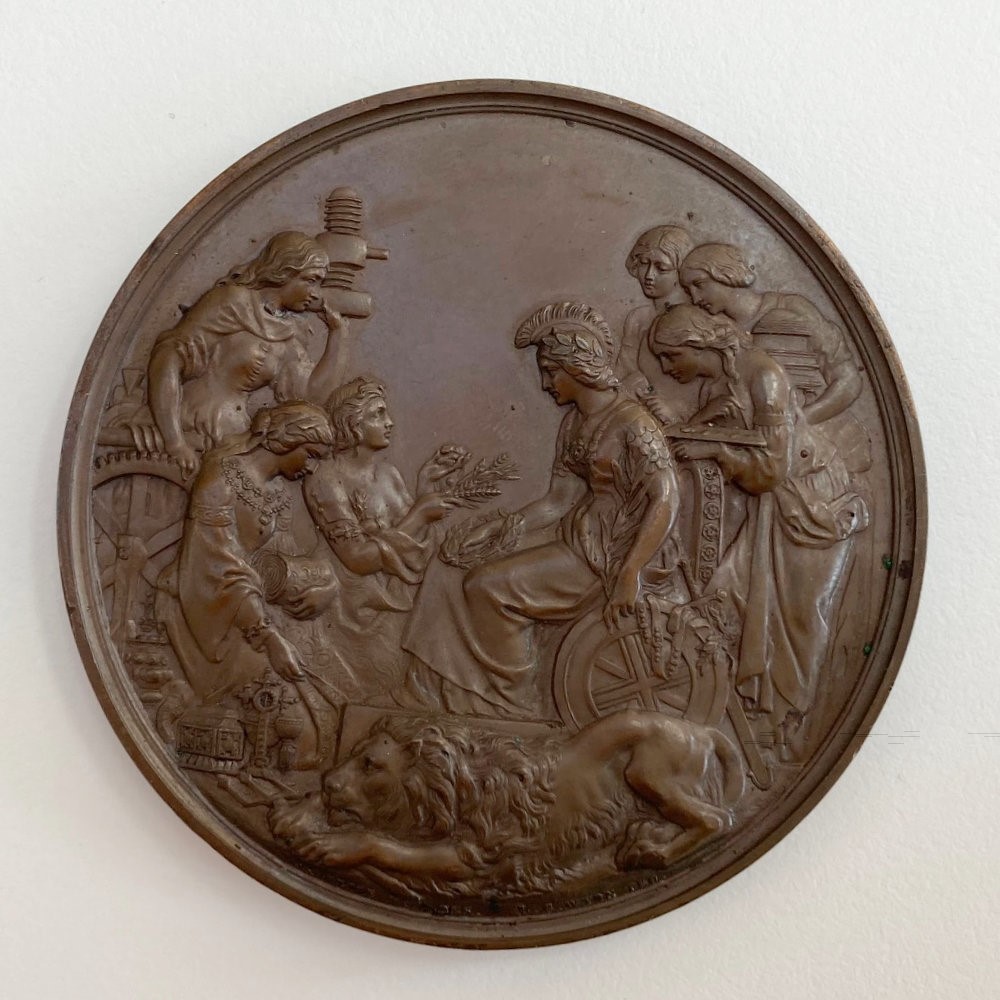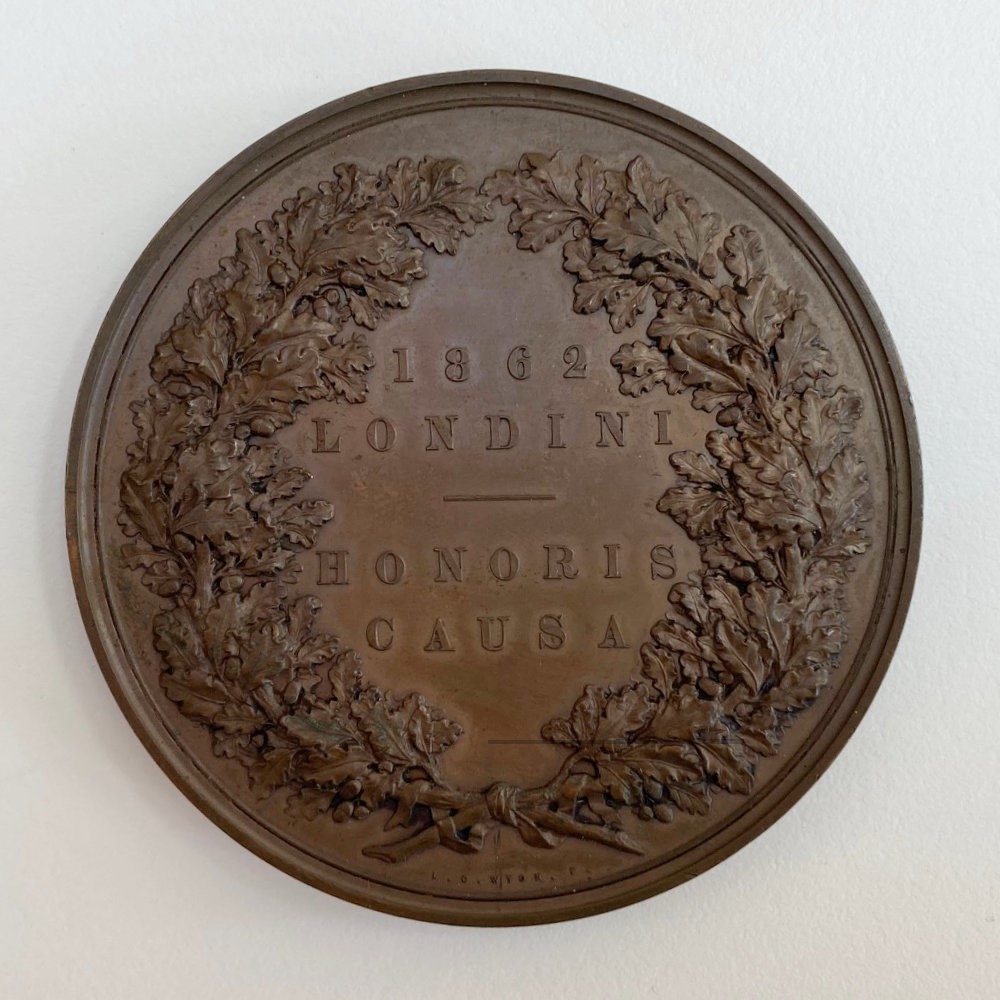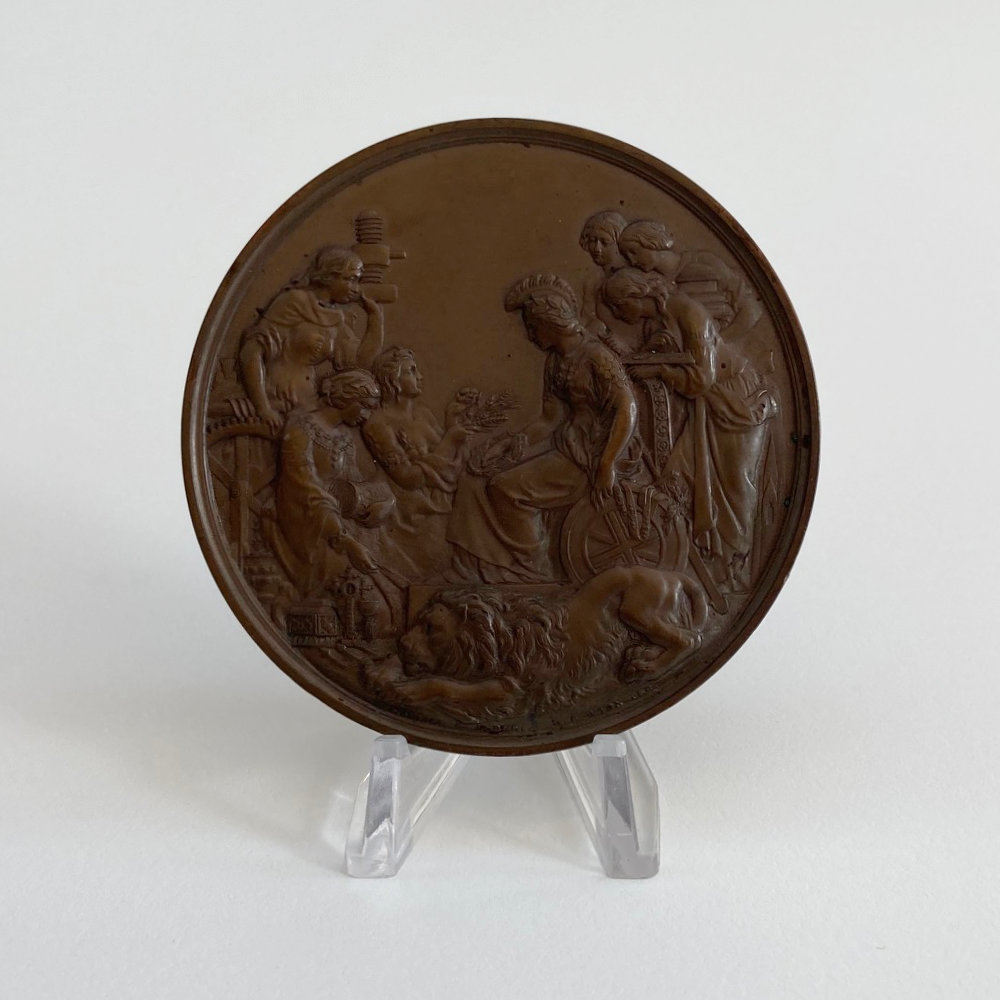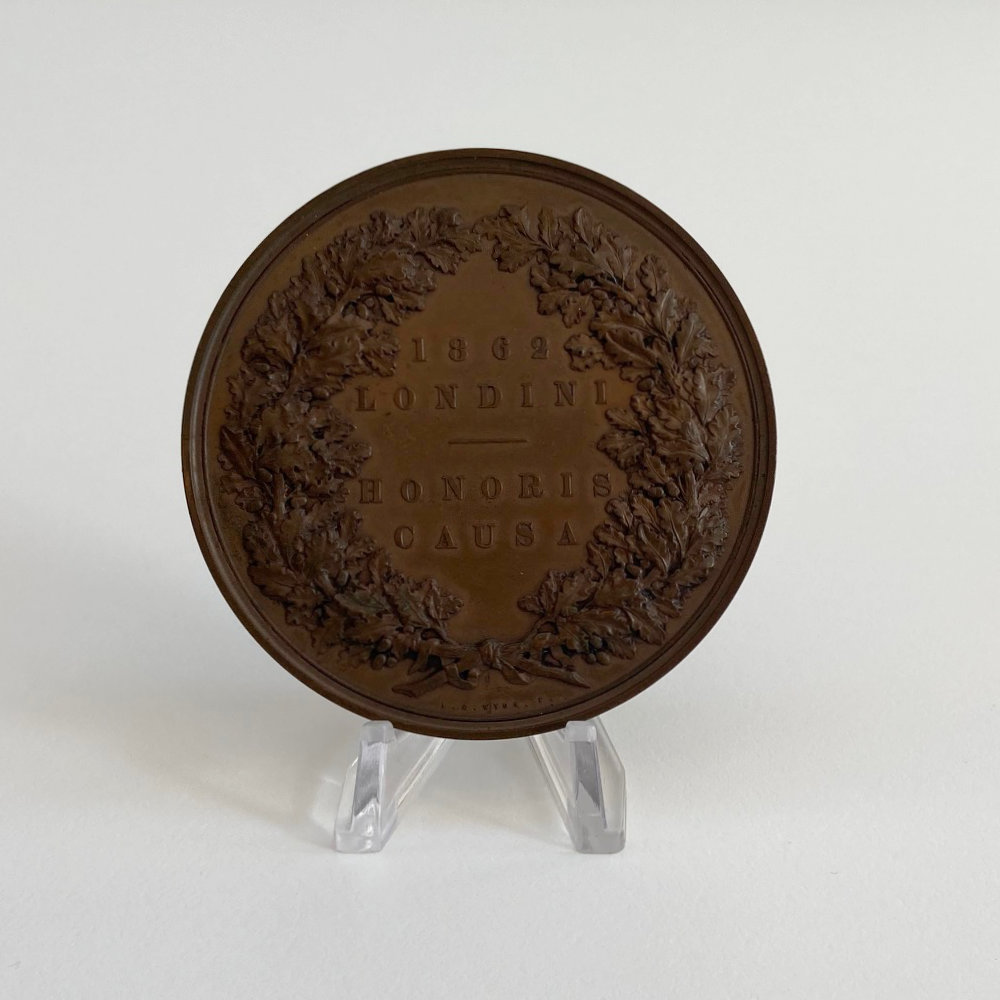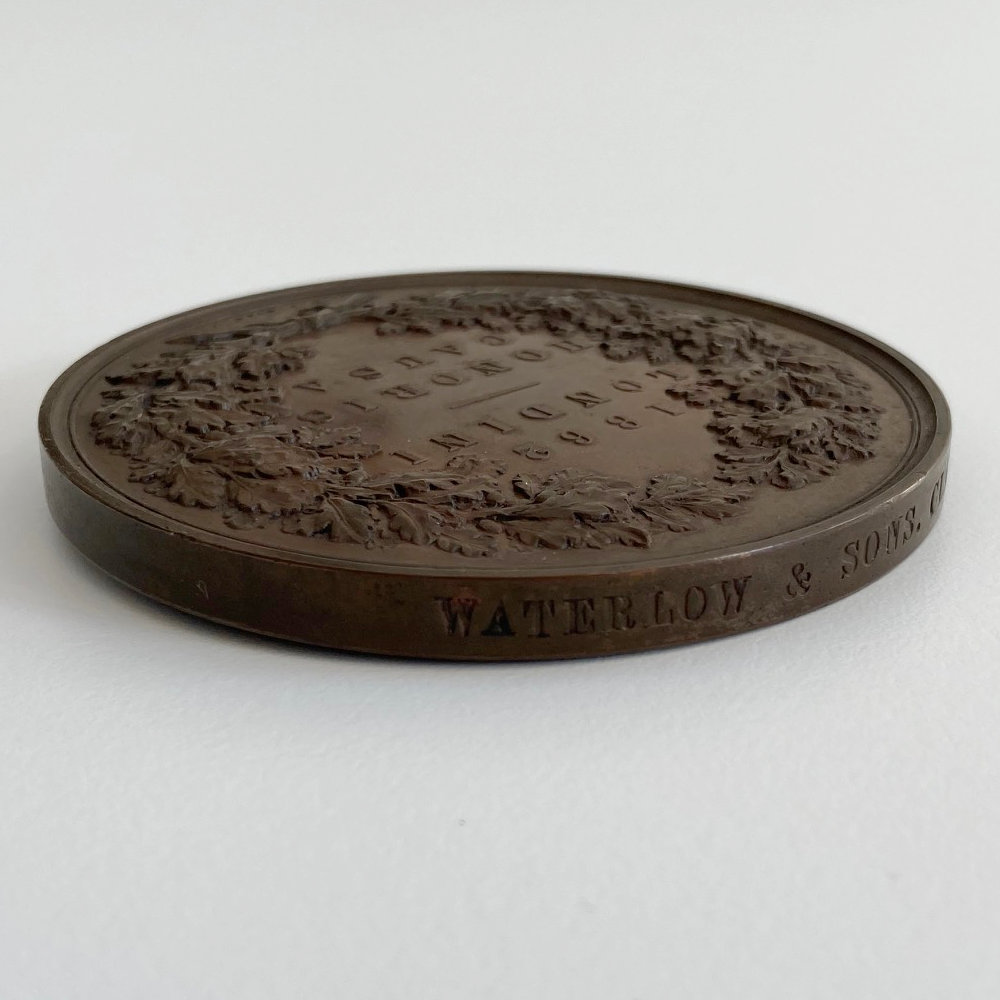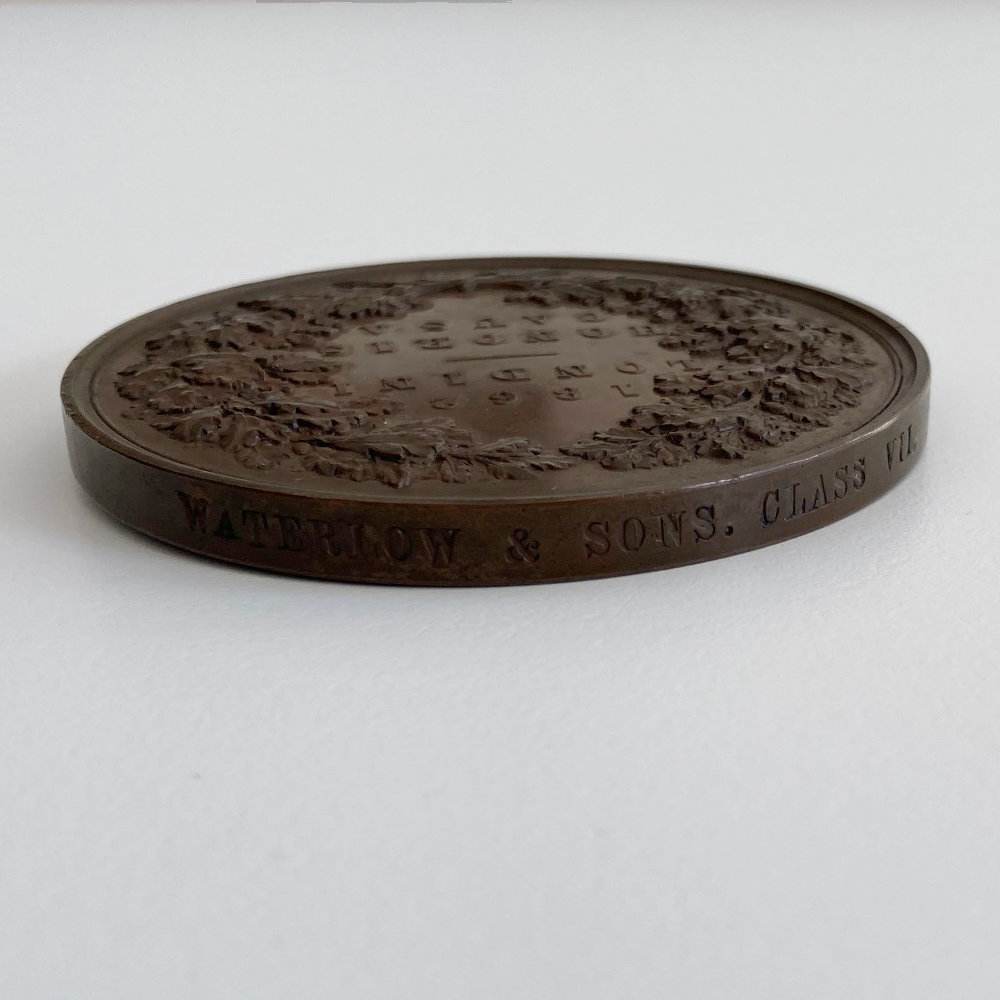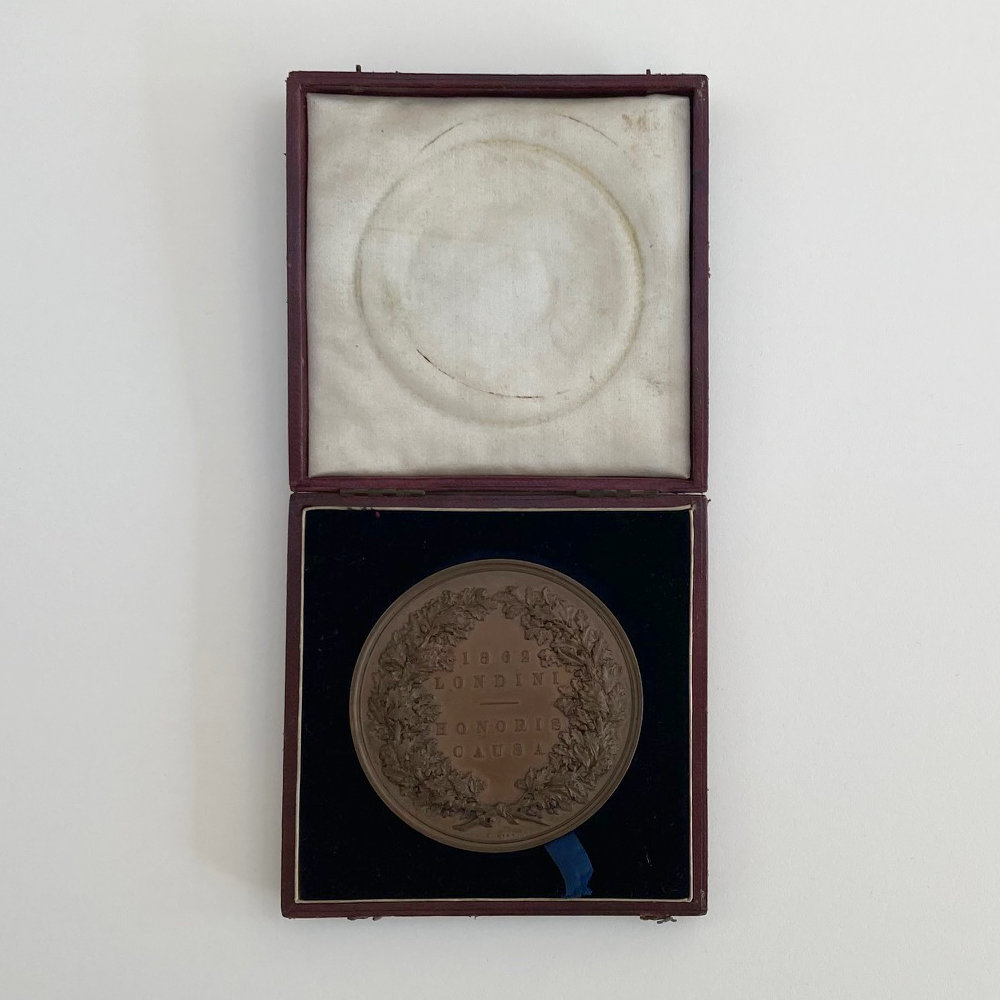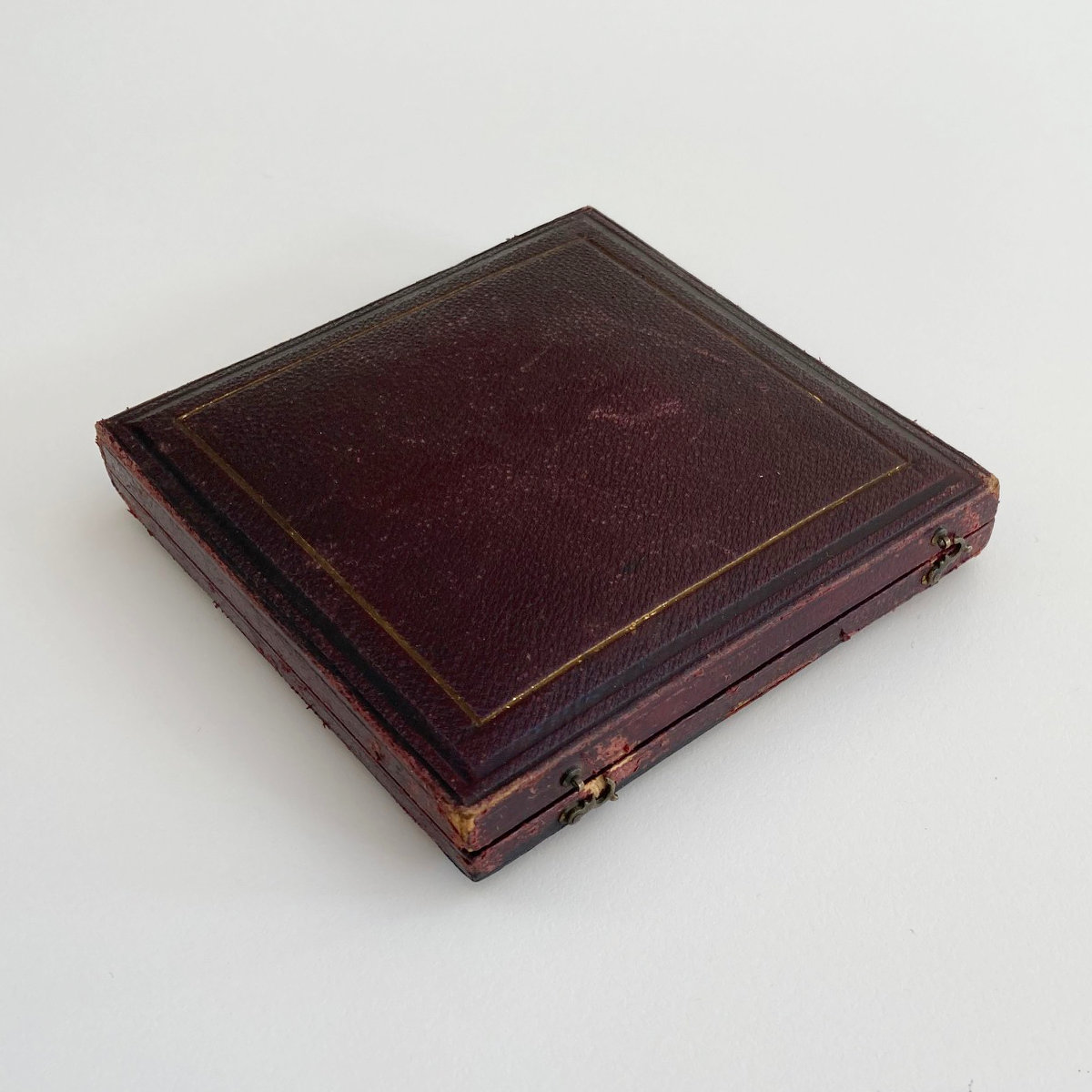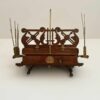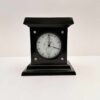Cased 1862 London International Exhibition Medal for Waterlow & Sons – Bank of England Printers
£2,000
Cased 1862 London International Exhibition Medal for Waterlow & Sons - Bank of England Printers
Dimensions
Dia: 7.5 x D: 1 cms
Circa
1862
Maker
Waterlow & Sons
Country of manufacture
UK and Ireland
Description
For sale, the 1862 London International Exhibition bronze prize medal for the renowned printing company of global currencies and postage stamps, Waterlow & Sons.
This superbly executed medal was awarded and individually engraved to each of the 1862 Exhibitors that were bestowed with a prize for their efforts.
Struck entirely from bronze, the obverse face shows Britannia seated with shield to her side and a sleeping lion at her feet. She is surrounded by six women each individually representing Industry, Agriculture and The Arts. The rim below the lion is marked with, D. Maclise R.A. DES. & Leonard C. Wyon FEC.
The reverse shows a wreath of oak running around the inner circumference with the words, 1862 Londini Honoris Causa which effectively translates to “London, a mark of esteem or respect” to the centre. In small letters to the base, the name of L.C. Wyon FEC is repeated.
The edge of the medal is further engraved to Waterlow & Sons. Class VII.
The International Exhibition was declared open by The Duke of Cambridge on the 1st of May 1862 in South Kensington on a site which is now occupied by The Natural History Museum. To give some idea of its scale, it featured nearly thirty thousand exhibitors from thirty six countries throughout the six months of its existence and welcomed over six million visitors.
This second exhibition was meant to follow up on the huge success of the 1851 Exhibition, originally intended to have been opened in 1861, it was delayed due to the Italian War of Independence, the Civil War in America and not least because of the death of Prince Albert, its Chief Patron and supporter. The latter reason is of course why Queen Victoria was not present at the delayed opening in 1862.
The building that housed the Exhibition was designed using brick and iron by the architect Captain Francis Fowke and contracted out to the firm of Kelk & Lucas. Sadly, Parliament declined the Government’s wishes to purchase the building after the Exhibition but the materials which were reclaimed were eventually put to use in the building of Alexandra Palace. Fowke was also responsible for proposing the building of The Natural history Museum which was eventually constructed in 1881 and remains on the site to this day.
The Waterlow firm was founded in 1810 by a law writer, James Waterlow who recognised the efficiencies that lithography could create in the reproduction of legal documentation which was of course, entirely hand copied during this time. A shop was opened in Birchin Street, London and the firm flourished as a result of the expansion of the railways, shipping, banking and insurance during the industrial revolution. It is interesting to note, that Birchin Street became the place where many early philatelists met to exchange stamps.
During the 1830’s and 1840’s James’s four sons were introduced to the business and in 1849, the founder left the company, now dubbed Waterlow & Sons to the brothers (Alfred, Walter, Sydney & Albert), which now included premises at Birchin Street, Cornhill, London Wall and Parliament Street.
Two years later, during the Great Exhibition, the brothers exhibited numerous printing machines including a machine for folding envelopes, which “attracted very great crowds” and resulted in the company’s first commission for stamp production for British Guiana. Their success was repeated in 1862 where the company’s entrance in Class VII – Machines and Tools employed in the Manufacture of Wood & Metal, won this medal in question for, “a well contrived railway ticket printing and numbering machine”.
It was described as follows:
“These machines are manufactured of best materials in the best possible manner, and have been in use for several years at the offices of some of the principal railway companies in the United Kingdom, the British Colonies, and on the Continent, to whom we are permitted to refer, and whose experience forms the best guarantee of their speed, durability, and general efficiency. They are constructed with a fast and loose rigger, to work from a shaft, or may be driven by hand with perfect ease printing, perforating, numbering consecutively, either at one or both ends of the tickets at one operation, at the rate of 8,000 to 10,000 per hour.”
Throughout the 1860’s and 1870’s, the firm continued to expand into new premises across London until the death of the founder in 1876 after which the brothers registered the company as Waterlow & Sons Limited. A year later and owing to a family dispute, the eldest son who had worked with his Father for some years prior to his other brothers, divided the company, forming with his sons and a Mr A Layton, the firm of Waterlow Brothers & Layton. This firm would continue the historic legal and governmental work for which the firm had gained its earlier reputation, whilst the remaining brothers would continue to specialise in railway work and export printing.
Both companies continued to exist in competition with one another until 1920 when the two firms finally reunited, probably as a practical move given the economic hardships of the Great War and its aftermath. It’s wide ranging products across printed medium and worldwide reach ensured that its business continued to prosper. By 1925, Waterlows had become embroiled in the Portuguese Bank Note Crisis where it was duped into creating Portuguese currency and resulted in the company having to pay the Banco de Portugal over six hundred thousand pounds in reparations. Despite this damaging episode, the company seems to have maintained its reputation and continued without interference to its normal course of business.
The company was finally taken over by De La Rue in 1961, the organisation who is still responsible today for the printing of British bank notes.



